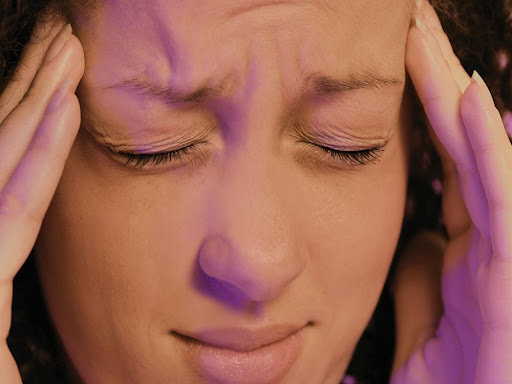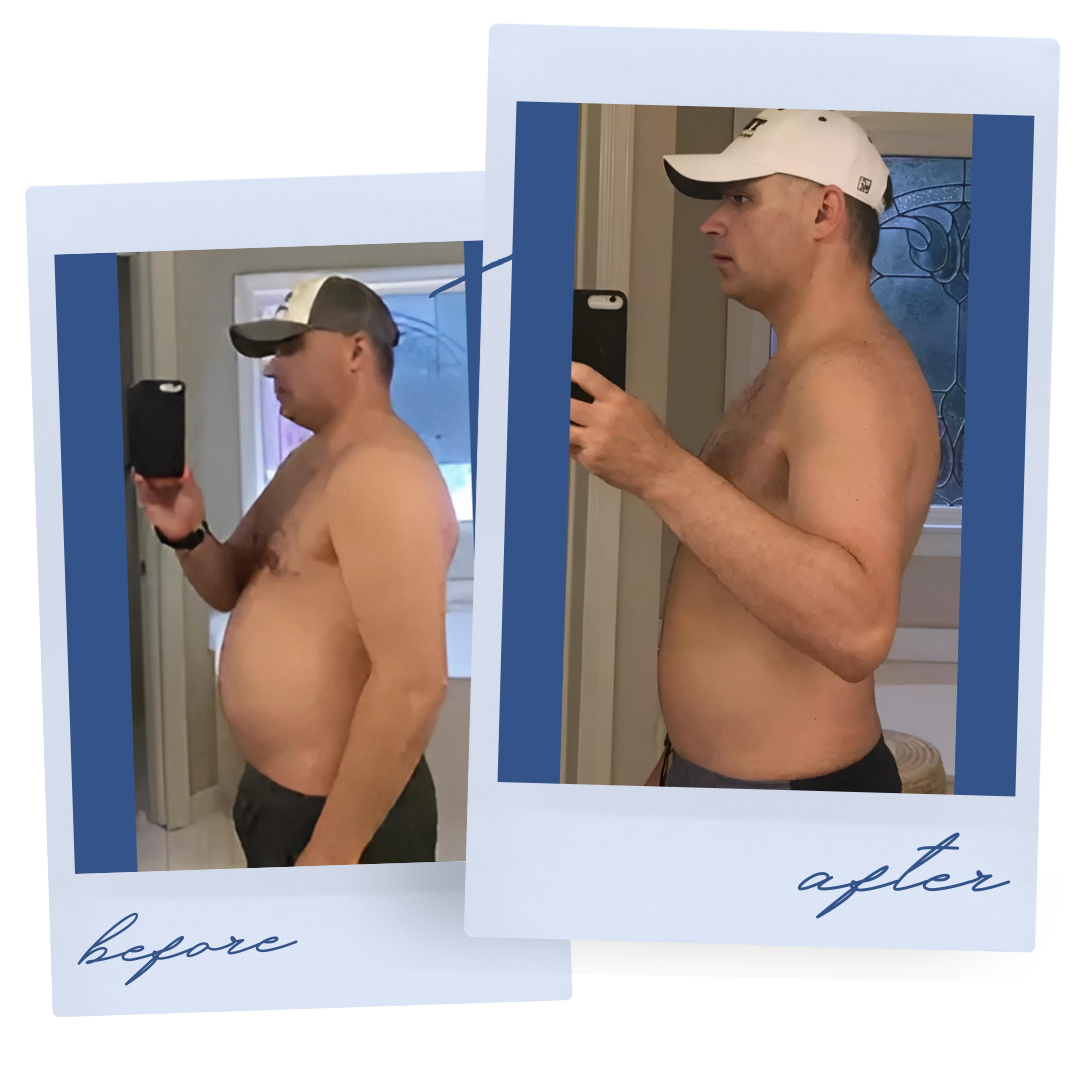A headache can be an occasional, minor discomfort, or a symptom of a more serious underlying illness. But did you know that there’s different types of headaches? There is! And we’re going to go over the 5 most common types of headaches.
5 Types of Common Headaches
1. Tension headache
A tension headache is the most common type of headache and is experienced by most people at some time. The pain, often described as a band-like pressure around the head, tends to be fairly constant. The sufferer may be able to feel points of tenderness over the scalp. There is no associated vomiting or aversion to bright light (photophobia). The headache is generalized and can last for weeks or months, and for this reason is unlike migraine, which tends not to last for more than 72 hours.
Tension headaches can be brought on by stress, noise, fumes and concentrated viewing of TV or computer screens. Sometimes they arise because the body is dehydrated. The worry of having a headache may cause the pain to continue. It is important to remember that this type of headache is not dangerous.
To manage a tension headache:
- Avoid precipitating factors if at all possible.
- Relaxation and physical exercise may be helpful, as can massage and cooling packs.
- Try drinking a glass of water if dehydration is suspected.
- Painkillers available at the pharmacy may help, but they should only be used as prescribed and for the short term.
2. Migraines
Migraine headaches are characterized by a throbbing pain on one side of the head. This is often accompanied by vomiting, seeing flashes of light and sometimes a tingling sensation or numbness, moving across the body.
Stress and certain foods can trigger migraine attacks. Once trigger factors are identified, they should be avoided where possible. Aspirin or paracetamol are often taken for pain relief, but sufferers should avoid any containing caffeine, such as codeine, as these may cause further headaches once they stop taking them. Specific anti-migraine drugs may be given as prevention, or for use during an attack. While the headache lasts, sufferers usually prefer to be in a dark, quiet place.
3. Sinusitis
Sinusitis is often fairly easily diagnosed since the headache may be associated with an upper respiratory tract infection or a cold with fever, runny nose and tenderness around the sinuses – at the top of the nose and around the eyes.
Simple steam inhalations or decongestants can help, and in a few rare cases surgery is required. Antibiotics are sometimes needed to clear an infection.
4. Cluster headache
Despite being referred to as ‘migrainous neuralgia,’ cluster headaches are not migraines. They are not common, and the ratio of male to female sufferers is 5:3. Usually beginning in the patient’s 30s, they tend to disappear after 35. The condition occurs more frequently among heavy smokers. Alcohol consumption may sometimes trigger an attack, although there appear to be no dietary triggers.
The symptoms are recurring attacks of extreme pain, located around one eye. Other symptoms include excess production of tears and blockage of the nostril on the side of the pain. There may also be vomiting. The patient tends to develop a pattern of pain at certain times in the day, for example, occurring every morning. It may even wake the patient up during the night.
Attacks can last for as little as 15 minutes, but can be up to 3 hours long. (They usually last between 30 and 90 minutes, however.) There are about 250,000 sufferers; they often feel restless and need to walk about.
The attacks may occur several times over a number of weeks and then be followed by months of being free of symptoms before another cluster of attacks occurs.
In severe cases, attacks occur several times a day.
Painkillers and treatments for migraine tend to bring little relief. Frequent severe attacks of cluster headache may be prevented by taking prescribed doses of lithium carbonate, but this is quite a toxic drug with unpleasant side effects-including nausea, vomiting and tremor-that need to be set against its potential benefits. The patient will also require regular blood tests to monitor kidney and thyroid function.
Inhalation of concentrated oxygen can sometimes help to stop an attack.
5. Trigeminal neuralgia
Trigeminal neuralgia may be caused by damage to the trigeminal nerve, the main sensory nerve supplying the face. Sufferers tend to be middle-aged or elderly. Common causes of damage include infections such as shingles and diseases such as multiple sclerosis that affect the protective layer that encases the nerve fibres.
Factors that trigger trigeminal neuralgia include cold, touch or the actions of eating or drinking. The pain is often sudden and severe and may cause the patient to flinch.
Attacks may last only seconds or minutes but can occur several times a day. Bursts of pain may be followed by a dull, aching sensation.
People who suffer from trigeminal neuralgia should attempt to avoid trigger factors. Drug treatment with tricyclic antidepressants or anticonvulsants such as carbamazepine often proves highly effective. Destroying part of the nerve by either local injection of phenol or by surgery may also be effective but can lead to permanent numbness.
Complementary therapies for headache relief
It is important to ensure that your headache is not due to a serious illness before considering the use of any complementary therapy.
Therapies that induce a state of relaxation (such as aromatherapy, holistic massage and reflexology) may help to relieve tension headaches. Similarly, relaxing exercises, such as those of yoga and t’ai chi, may also be useful. Camomile tea and valerian, which have a calming effect, can also help.
Certain supplements can also be beneficial to those affected by headaches. These include:
Feverfew, which may prevent or alleviate some types of headaches, including migraines, when taken over several weeks or months;
Riboflavin (a B vitamin) and a combined magnesium and calcium preparation, taken daily, may be effective for persistent migraines.
Chiropractic services can help!
A skilled chiropractor can help relieve the symptoms of migraines and other types of headaches, usually through manual therapies like spinal manipulation, massage and other techniques.
Chiropractic care is also helpful for treating tension headaches and cervicogenic headaches.
Tension headaches typically occur once or twice per month and cause steady pain on both sides of the head.
Unlike migraines, tension headaches don’t cause nausea, light sensitivity or sensitivity to certain sounds or smells.
Cervicogenic headaches originate in the neck, but the pain they cause radiates to the head.
Depending on the severity of your migraine headaches and the symptoms you experience, a chiropractor may recommend soft tissue therapy, spinal manipulation, lifestyle changes and/or acupuncture.
Soft tissue therapy may include massage, taping or manual resistance techniques to address issues with the muscles, ligaments, tendons and connective tissues of the body.




